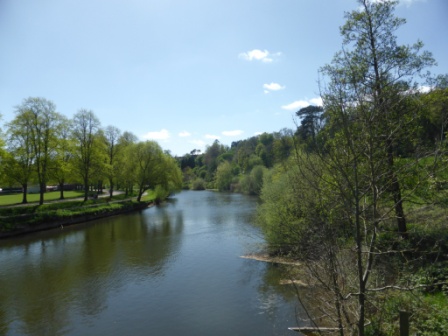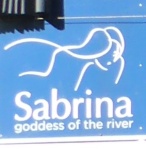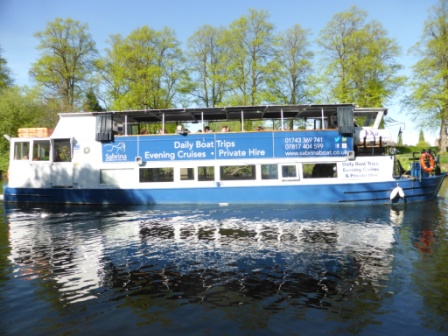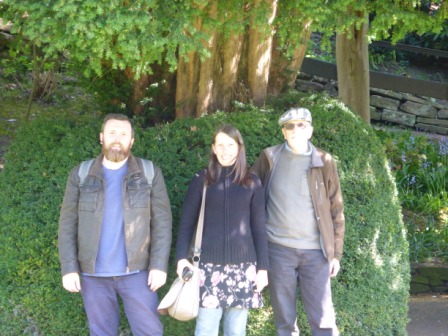On Saturday 22nd April we held our annual Brython meetup. Members present were Greg, Lee, and myself. We chose Shrewsbury because of its location on a trainline in the midlands for accessibility, because it is on the Severn, and because Gerald of Wales claims that Shrewsbury was the centre of the Brythonic kingdom of Pengwern.
The weather was beautiful so we did business on the banks of the river Severn which is dedicated to the goddess Sabrina (it was earlier known as the Hafren and Sabrina as Habrena).
Habrena bless this Brython gathering
Held beside your flowing river
Which we bless with this offering
To your waters and your lands.

When we made our offerings of words and mead the cruise boat ‘Sabrina goddess of the river’ passed.


We visited Shrewsbury castle, which may have been the site of the hall of the Cyndrwynyn, the rulers of Pengwern. Welsh literary tradition suggests that Cynddylan ap Cyndrwyn, the last of his line, and all his brothers and sisters apart from Heledd were slaughtered by the Anglo-Saxons of Northumbria during the 7th century.
There have been many conflicts since. King Offa of Mercia possessed Shrewsbury in 778. The Norman motte and bailey castle was built on the site of the Saxon settlement between 1067 and 1074. It was besieged by the Welsh in 1069, but William the Conqueror repelled them. The red sandstone hall was added between 1272 and 1307 during the reign of Edward the 1st.
The deaths of Cynddylan and his family are memorialised in ‘The Heledd Cycle’, which is attributed to Heledd, but was probably composed much later. Unlike the ‘heroic’ poetry attributed to Taliesin it laments the tragedies and losses of war. We read a selection (translated by Greg) in Welsh and English.
stauell gyndylan ys tywyll heno,
heb dan, heb wely
wylaf wers, tawaf wedy
Cynddylan’s hall is dark tonight,
without a fire, without a bed.
I weep awhile; then I am silent.
We also spent a while exploring the town, admiring the Tudor architecture. One of the buildings we stopped at was the Drapers’ Hall. The Shrewsbury Drapers acted as middlemen in the Welsh wool and cotton trade – a dangerous role as when they carried their wares from Oswestry they risked robbery by highwaymen such as Wild Humphrey Kynaston who lived in the sandstone caves above Nescliffe with his horse, Beelzebub.

Our business session led to the decision to put out the call for submissions to encourage others to contribute to the body of devotional material we are building up around Brythonic festivals and deities. We are also planning to continue writing articles on theory and practice.
We are hoping that by the time next year’s meeting arrives others will be joining us.



Reblogged this on Signposts in the Mist and commented:
Write-up of our Dun Brython meet-up in Shrewsbury on Sat 22nd April.
LikeLike
to my knowledge the name Sabrina is the earliest form, later when the Celtic spoken in Britain developed into early Welsh at the end of the Roman period there was a change in words that had begun with S (like Sabrina) became spoken with an H, so Sabrina became eventually (along with other sound changes) Hafren in Welsh, and in old English Safern. I have never met anyone who speaks the old Gaulish Celtic language (funnily enough) but so I have read the S may have been pronounced more like ‘Sh’ which would explain the S sound later becoming just an H sound. I wonder how the locals spoke ‘Sabrina’ probably more like ‘Shabrena’ perhaps? the delights of speculating about things we will not know!
LikeLike